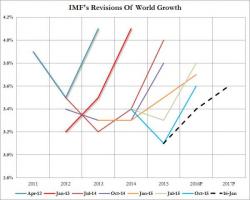Canada Set To Unleash Negative Rates As Oil Patch Dies, Depression Deepens
This Wednesday, the Bank of Canada has a decision to make.
Canada’s oil “dream” is dying thanks to the inexorable slide in crude prices and as the IEA made clear earlier today, the pain is set to persist for the foreseeable future as the world “drowns in oversupply.”


